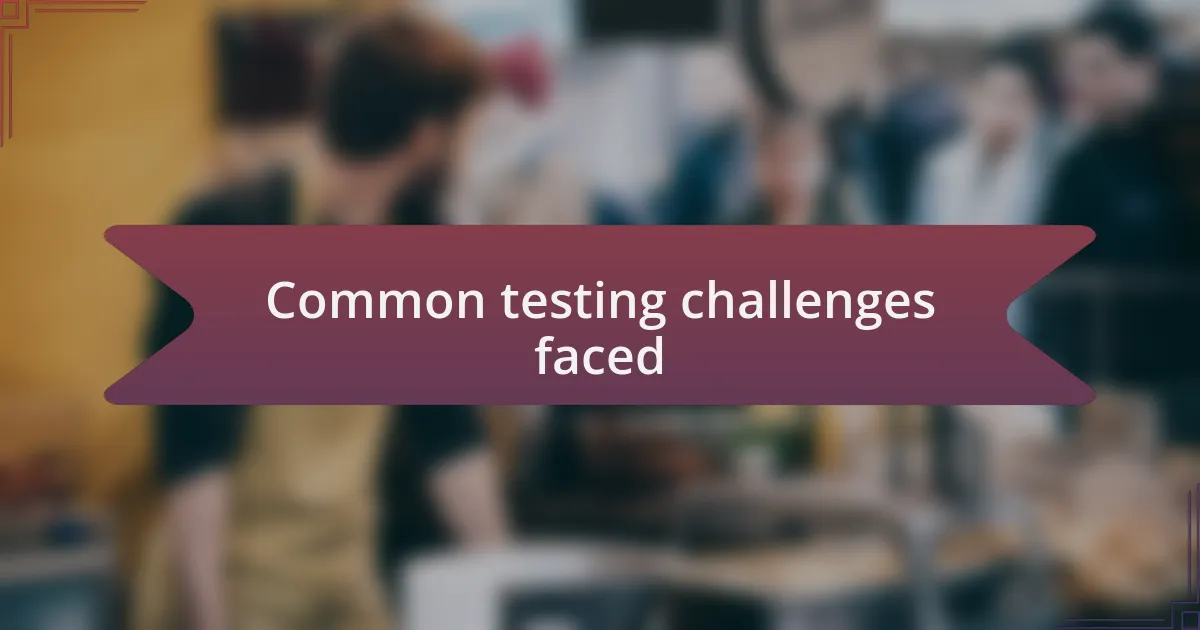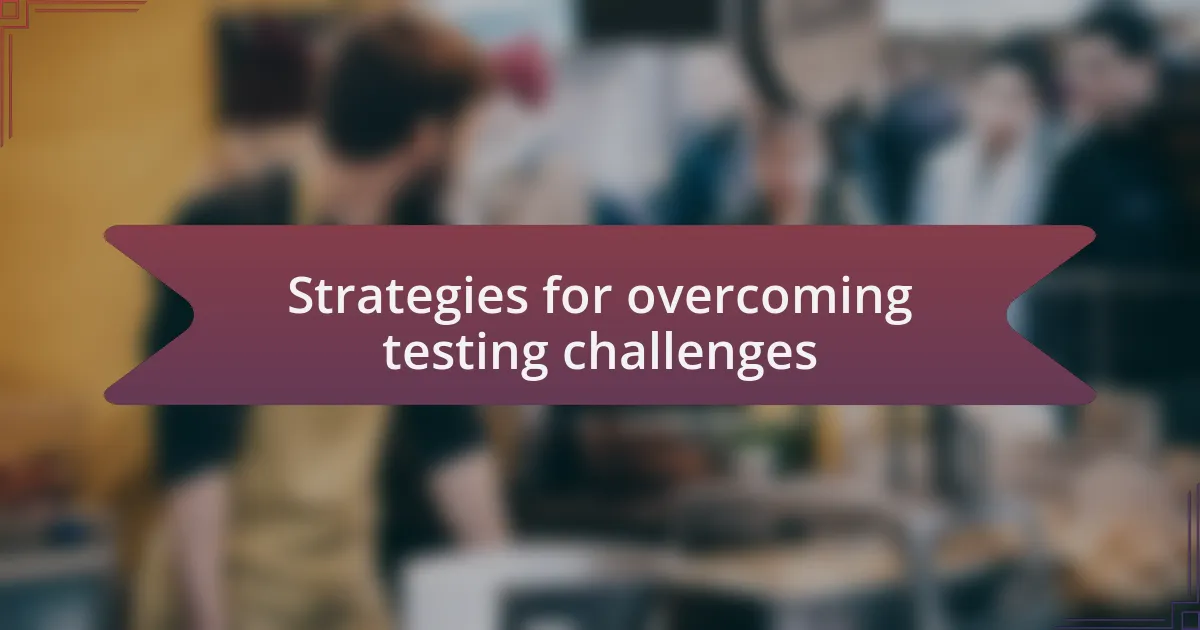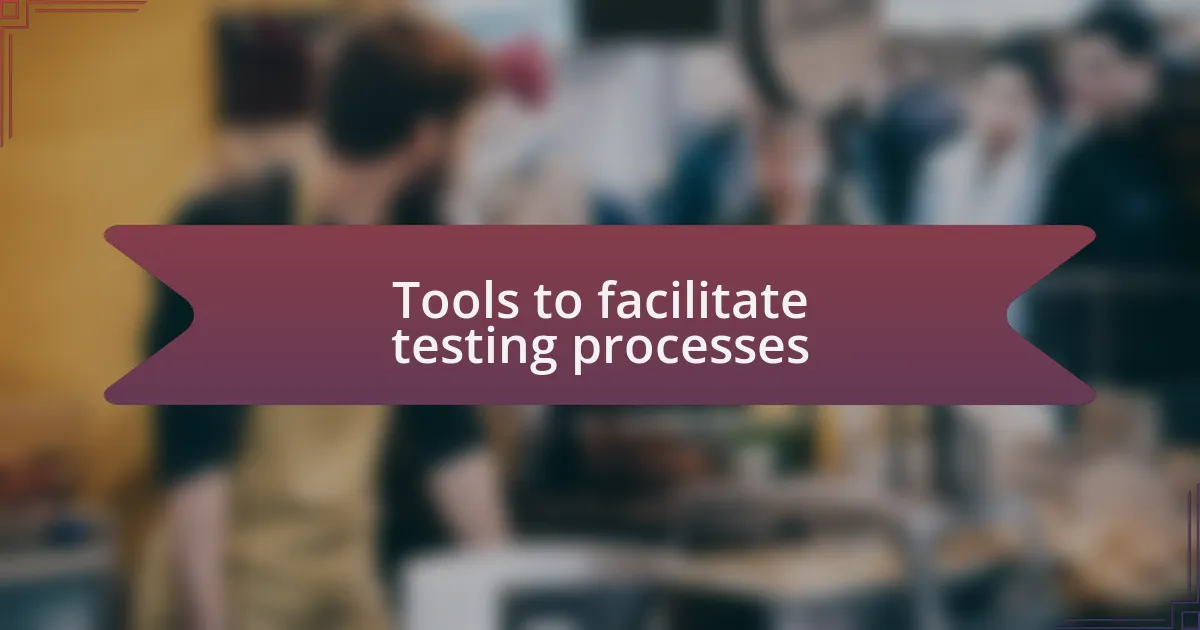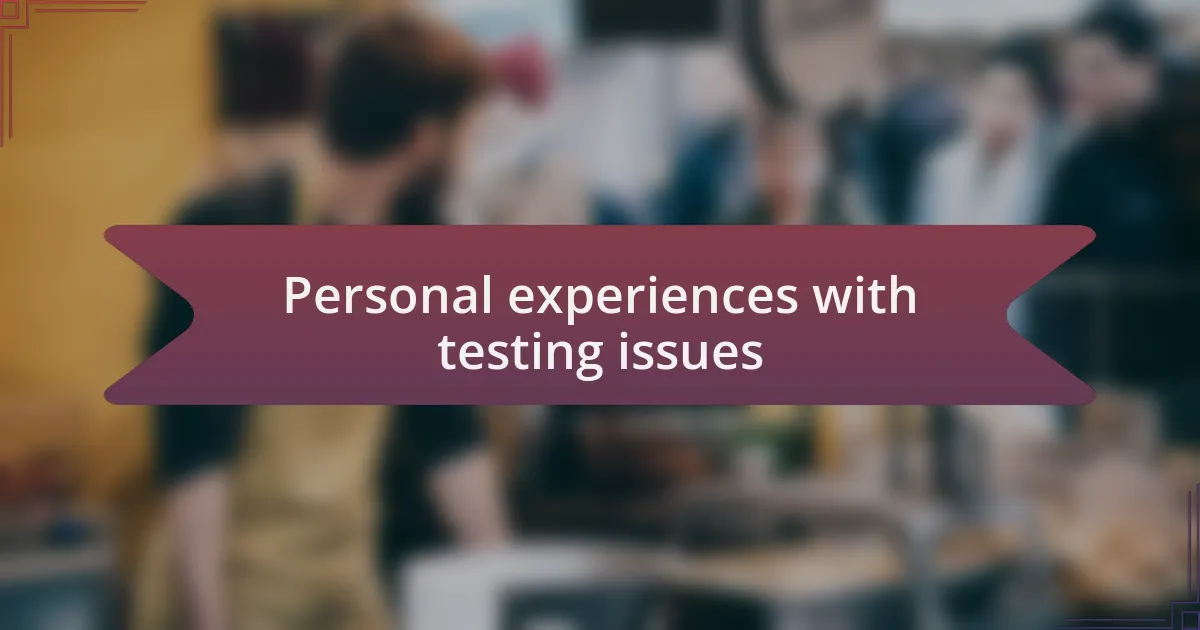Key takeaways:
- Testing challenges in software development, such as evolving requirements and environmental variability, can lead to critical issues if not addressed early.
- Effective software testing mitigates risks, enhances user satisfaction, and drives project efficiency, ultimately protecting a company’s reputation.
- Implementing strategies like risk-based testing, continuous feedback, and automation can significantly improve the testing process and outcomes.
- Personal experiences reveal that collaboration and adaptability are essential in navigating testing challenges and improving team dynamics.

Understanding testing challenges in software
Testing challenges in software development can often feel overwhelming. I recall a project where a seemingly minor bug snowballed into a major issue, affecting multiple functionalities. It made me realize how a single oversight can have cascading effects, leading to frustration and missed deadlines.
One significant challenge is the evolving nature of requirements. Have you ever started testing only to find that the specifications have changed? This scenario is all too familiar for many of us. I once faced a situation where the project requirements shifted midway through the testing phase, forcing my team to scramble to adjust our test cases, which put an immense amount of pressure on everyone involved.
Another issue is the diverse range of devices and environments we need to test our applications on. I often find myself thinking about how many variations exist—different browsers, operating systems, and screen sizes can complicate the testing process. I remember struggling with compatibility issues on a recent project, which highlighted the necessity of comprehensive testing strategies to ensure a seamless user experience across platforms.

Importance of software testing
Software testing is crucial in mitigating risks associated with software defects. Just last year, I was part of a project that deployed a new feature without comprehensive testing. The result? A flood of user complaints that quickly turned into a PR crisis. It really underscored for me how thorough testing can save not just time, but also protect a company’s reputation.
One of the most vital aspects of testing is ensuring that software meets user expectations. Have you ever used a product that just didn’t work the way you thought it would? I’ve been there, and it’s disappointing. When I was a tester for an e-commerce platform, our team spent extra hours refining the checkout process, and the feedback was overwhelmingly positive. This experience reinforced my belief that user-centric testing is essential to deliver applications that genuinely resonate with end-users.
Moreover, effective testing can drive project efficiency and cost-effectiveness. I recall a situation where our early bug detection saved us from an expensive post-launch repair. Each issue we identified during the testing phase not only saved the company resources but also improved team morale. The tangible benefits of investing in robust testing practices cannot be overstated—they’re essential for project success and long-term growth.

Common testing challenges faced
When it comes to testing challenges, one of the most prominent issues I’ve encountered is the lack of time. In a recent project, our deadlines felt suffocating, forcing us to rush through testing. I remember feeling stressed, knowing that shortcuts could lead to significant pitfalls, yet the pressure from stakeholders made it hard to advocate for more thorough processes. Does anyone else feel that tension between speed and quality often?
Another recurring hurdle I’ve faced involves the integration of new technologies. During a project that incorporated third-party APIs, we ran into unexpected compatibility issues. I often find myself pondering if it’s worth the risk, as each new integration comes with its own set of testing requirements and uncertainties. Reflecting on that experience, I understand just how critical it is to thoroughly evaluate dependencies before diving into full-scale testing.
Finally, user environment variability poses a challenge that can’t be overlooked. I once dealt with an issue where a feature worked flawlessly in our controlled testing setup but failed in real-world scenarios. Hearing user frustration in support tickets was disheartening. It got me thinking about how essential it is to simulate varied user environments to capture these discrepancies early on. How can we ensure that what works in one setting translates seamlessly to another? Therein lies the complexity of our testing landscape.

Strategies for overcoming testing challenges
Choosing a testing strategy that aligns with the project’s goals can make a significant difference in addressing time constraints. In one instance, I implemented a risk-based testing approach, prioritizing features based on their importance and potential impact. This not only allowed us to focus our limited time effectively but also helped manage stakeholder expectations, ultimately easing some of that pressure. Have you ever experienced the relief of knowing you’ve targeted the right areas?
Another effective strategy has been fostering a culture of continuous feedback during the testing phase. I remember a project where regular check-ins with the development team helped surface integration issues early on, rather than waiting until the end. By creating an open dialogue, we could address concerns collaboratively, paving the way for a smoother testing process. Does your team embrace open communication to catch challenges before they escalate?
Lastly, embracing automation has been a game-changer in tackling user environment variability. I once led an initiative to implement automated regression tests that could run across different configurations, catching issues we might have missed otherwise. This not only saved us valuable time but also gave the team peace of mind, knowing we could rely on consistent results. Isn’t it fascinating how automation can help bridge the gap between theoretical and real-world scenarios?

Tools to facilitate testing processes
When it comes to streamlining testing processes, the right tools can make a world of difference. One of my go-to tools is JIRA, which provides robust issue tracking and project management capabilities. In a recent project, I utilized JIRA to create a transparent backlog, allowing both testers and developers to prioritize tasks collaboratively. This not only helped to keep everyone on the same page but also fostered a sense of shared responsibility. Have you found any tools that improve team collaboration?
Another essential tool in my toolkit is Selenium, which has transformed how I handle UI testing. I vividly remember when I first integrated Selenium into our workflow; the ability to run automated scripts saved us countless hours of manual testing. The thrill of watching our tests run seamlessly across different browsers was exhilarating. If you haven’t tried automation yet, what’s holding you back from exploring its potential?
Additionally, I’ve found that incorporating tools like Postman for API testing has significantly enhanced our efficiency. During one project, we used Postman to validate endpoints quickly, which minimized downtime and ensured smoother integration. I can still recall the moment we identified a critical API bug early in testing, preventing a potential delay in deployment. Isn’t it amazing how a small tool can have such a big impact on your project’s success?

Personal experiences with testing issues
Testing challenges can often feel overwhelming, but I’ve learned that they also offer valuable lessons. I remember a time when I encountered unexpected bugs during the final stages of a project. It was tense; the pressure was on to deliver. I found myself immersed in debugging late into the night, but ultimately it sharpened my skills and taught me the importance of early testing. How do you approach testing under such tight deadlines?
On another occasion, I faced a particularly stubborn performance issue that eluded our initial tests. I realized we had to rethink our strategy. Armed with determination, I pulled in the team for a brainstorming session, and we uncovered insights that completely shifted our understanding of the problem. That moment of collaboration not only fixed the issue but also deepened our team dynamics. Can you recall a testing hurdle that transformed into an opportunity for teamwork?
I also grappled with the challenge of balancing manual and automated testing. In one project, I was torn between the efficiency of automation and the nuances of user experience that only manual testing could capture. It felt like walking a tightrope, where one misstep could impact our product’s quality. Ultimately, finding that balance taught me the importance of flexibility and adaptability in testing methodologies. Have you faced a similar struggle in your testing approach?

Lessons learned from testing challenges
Encountering testing challenges often reveals unexpected insights. For instance, during one release, we experienced a series of integration issues that nearly derailed our timeline. I was frustrated, but as I analyzed the chain of events, it became clear that our communication didn’t adequately cover the complexity of the dependencies between modules. Reflecting on this, I understood the need for comprehensive documentation and clearer channels of communication to prevent such hurdles in the future. Have you found that improving communication has helped in your own testing endeavors?
Another poignant experience involved a time when a simple user interface update led to a cascade of failures further down the line. I felt the urgency mounting as we combed through the tests, racing against the clock. This incident taught me to always consider the broader impact of changes, emphasizing the importance of holistic testing strategies. It was a frustrating lesson, but one that underscored how crucial it is to anticipate the ripple effects of small adjustments. Have you encountered similar scenarios where a minor change spiraled into major complications?
Lastly, I can’t forget the learning curve when switching from a waterfall to an agile testing approach. Initially, the rapid iteration cycle felt chaotic, and I struggled to adapt my testing mindset accordingly. Yet, as I engaged with iterative testing, I realized the speed allowed immediate feedback and a more responsive development process. Embracing this shift flipped my perspective on testing from a reactive process to a proactive one focused on continuous improvement. How has your transition to agile environments influenced your approach to testing?